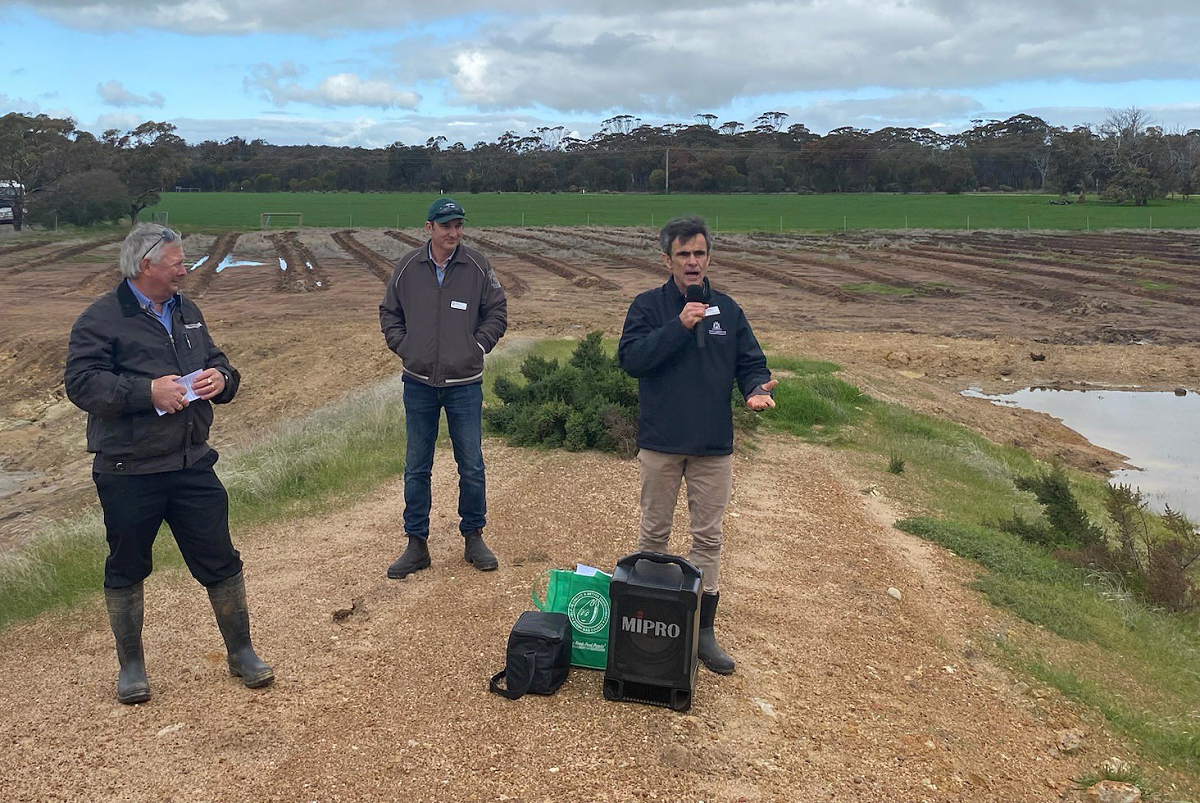
The tour of the property was a part of the Department of Primary Industries and Regional Development’s (DPIRD’s) showcase of land management and livestock research at the station.
The Katanning station property is a demonstration site for a range of carbon sequestration initiatives to assist farmers to adopt strategies to improve business sustainability and profitability.
Carbon sequestration activities underway include revegetation using saltbush and fodder shrubs, windbreaks, shelterbelts and alley farming, as well as planting permanent eucalypt and sandalwood trees.
This is complemented by engineering solutions to improve surface water management and groundwater drainage on the site.
Showcase visitors toured a degraded 24 hectare saline site, used in the department’s Salt Land Rehabilitation project to enhance productivity and improve biodiversity.
Senior development officer Justin Hardy said the site was being rehabilitated using a multi-faceted approach to prevent further salinity expansion and improve land restoration.
“The aim is to demonstrate drainage design and construction solutions and a range of revegetation options to assist farmers to integrate best practice land management into their operations,” he said.
“Drainage works include broadbased banks and groundwater drains to dry out the surface water profile and baseflow groundwater, thereby allowing soil surface cover and effective revegetation.
“We are also rejuvenating the site with more than 50 different local plant species to improve biodiversity and create a thriving ecosystem that supports both native flora and fauna.”
While not featured on the tour, the property also features a 90 hectare carbon sequestration demonstration site planted with salt tolerant perennial pastures for rotational sheep grazing and to fill seasonal feed gaps.
“This project includes setting and recording biomass to aid grazing targets so farmers can adjust their stocking densities to avoid land degradation, while meeting market specifications,” Mr Hardy said.
Alongside these measures, DPIRD is investigating measurement methodologies and techniques for Natural Capital Accounting to assist farmers to confidently and accurately measure carbon on properties.
DPIRD continues to work closely with farmers, industry and experts to assess the viability, efficacy and scalability of these options.
A new video with a useful information to assist farmers with planning groundwater drainage works is now available online.
Picture caption: DPIRD officers John Firth (left), John Paul Collins and Justin Hardy at a rehabilitation site during the recent KRS Showcase site tour.


